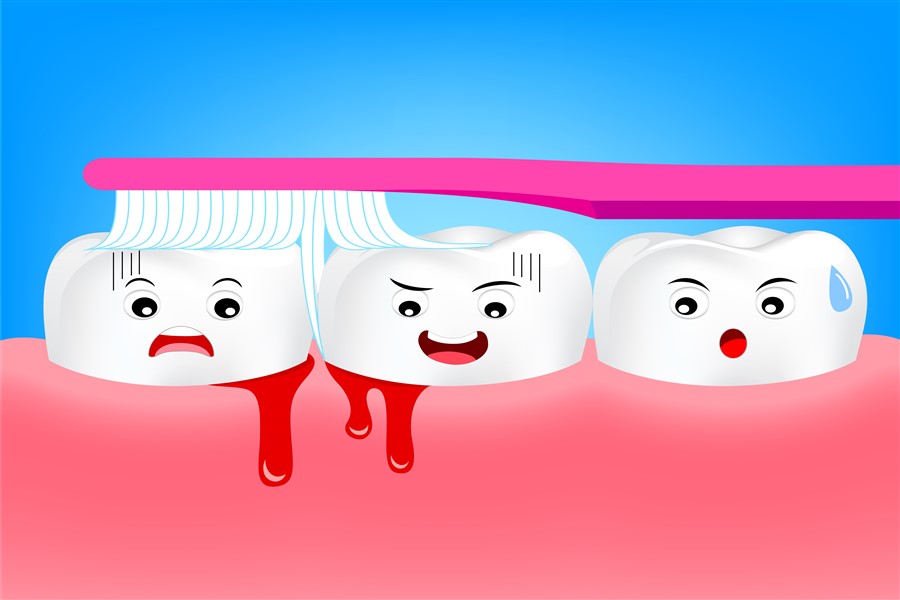Lets Talk About Gum Disease

Gum Disease
When your dentist or hygienist talks about gum disease, they are referring to either Gingivitis or Periodontitis. Gingivitis is the inflammation of the gums around the teeth and is a general term for diseases affecting the gums. Gingivitis most often occurs when bacterial plaque and tartar collect and stick on tooth surfaces. Periodontitis is an inflammation of the periodontium, the tissues that support the teeth in the mouth, and if left untreated, can result in bone and tooth loss. Today we will explore gingivitis, it’s cause, symptoms, treatment and prevention.
Gum Disease Causes
Gingivitis is usually caused by calculus (tartar) that forms on tooth surfaces when bacterial plaque builds up in the hard to clean spaces between your gums and teeth. These accumulations may be tiny, even microscopic, but the bacteria in them produce chemicals and toxins that cause inflammation of the gums around your teeth. This inflammation can, over time, cause deep pockets between your teeth and gums and, eventually loss of bone around your teeth (periodontitis) if left unchecked.
People with healthy gums, bone and surrounding tissue should book a professional cleaning and check up every 6 months to help keep their mouth that way. For those of you who find yourselves struggling to keep plaque and tartar from building up on your teeth, more frequent cleanings can help. If the inflammation in your gums becomes especially well-developed, it can invade the gums and allow tiny amounts of bacteria and bacterial toxins to enter your bloodstream. You may not even notice this, but some studies suggest this can result in a generalized increase in inflammation in the body which can lead to possible long-term heart health issues.
Symptoms of Gum Disease
Most healthy individuals have gingivitis in some area of their mouth at one time or another, usually due to inadequate brushing and flossing. Most often, a trip to the hygienist for a professional cleaning and a little more attention paid to flossing and brushing arrests the inflammation. The most common symptoms of gingivitis are as follows:
- Swollen gums
- Persistent mouth sores
- Bright-red or shiny gums
- Gums that are painless, except when pressure is applied
- Gums that bleed easily, even with gentle brushing, and especially when flossing
- Itchy Gums, mild to moderate severity
- Receding gumline, you may not notice but your hygienist will.
Gum Disease Treatment
If you think you may have one or more symptoms of gingivitis, come see us. We can perform a thorough cleaning of your teeth and gums, check for any underlying issues and give you tips to help prevent the concern in the future. The removal of plaque is usually not painful, and the inflammation of your gums should be gone within 7 – 10 days. The hygienist will use specialized tools designed to get in and around your teeth to scale, or scrape, any residue off the tooth surfaces. We can also perform an assessment of your overall oral health and provide individual education targeting any trouble areas. An anti-bacterial rinse or mouthwash can also help with prevention by rinsing away debris and food residue in between brushing.
Gum Disease Prevention
The easiest way to prevent gingivitis is with thorough oral hygiene that includes daily brushing and flossing. For more stubborn cases, a rigorous plaque control program which includes periodontal scaling and curettage have also proven to be helpful. And don’t forget your twice annual cleaning and checkup, we can help keep gum disease at bay! Contact Devon Dental Centre today for your check up and stop gum disease before it starts!